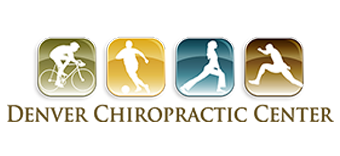Video- if you can’t do this, you may have a problem, your odds needing back surgery, and this week’s 1-Page Health News
Hi Glenn,
Happy Monday! Well, the heat is back. And for most of us active people, that’s kind of a good thing. Maybe I’m odd, but I enjoy riding my bike on a really hot day.
There’s an interesting study from the journal Spine showing that back pain patients who started with a chiropractor were 28 times less likely to end up having surgery than patients who started by seeing a surgeon. (see below).
This week, Dr. Stripling has a great video for you on the chair squat. I know, you’re thinking, “The squat again?” Here’s the truth: there are a few basic movements that add up over time. If you can’t get yourself closer to the ground correctly, you wear out your spine. Then, one day, you go to tie a shoe, or pick up a bag of dog food, or sneeze – and blow your back out. We see it day in and day out in our office. So, after reading this week’s 1-Page Health News, I strongly suggest taking a look at this week’s video. Of course, if you have a bad back already, you should learn this under our supervision (call us). Proceed wisely!
Health Alert: What Concussion?
Many United States high school football players think it’s okay to play with a concussion even though they know they are at risk of serious injury. Over 90% of players polled recognized a risk of serious injury if they returned to play too quickly, but only 54% would always or sometimes report their concussion symptoms to their coach. Pediatric Academic Society, May 2013
Diet: Fight Inflammation!
Chronic inflammation is a condition that can be triggered by obesity and can ultimately lead to both cardiovascular and metabolic disease. Some foods that are known to combat unhealthy inflammation are citrus fruits, leafy greens, tomatoes, wild salmon, and whole foods high in fiber. University of Alabama at Birmingham, March 2013
Exercise: ‘Walkable’ Neighborhoods.
Preschool children are less likely to be obese if they live in a neighborhood that is safe and within walking distance of parks and retail services. Pediatric Academic Society, May 2013
Chiropractic: I Like Those Odds!
Patients who went to a chiropractor first had were less likely to undergo surgery than those who went to a surgeon first. 42.7% of workers with back injuries who first saw a surgeon had surgery, in contrast to only 1.5% of those who initially saw a chiropractor. Spine, December 2012
Wellness/Prevention: Brain Power Boost.
Regularly consuming the healthy fats found in fish, extra virgin olive oil, and nuts may assist in maintaining cognitive functions in older individuals. British Medical.
Journal, May 2013.
Video link: Dr. Stripling shows you the chair squat. You really should be able to do this pain free.
Awesome Dog finds a great home:
I’m happy to report that Rooster has found a home. My good friend Dave Kupernick adopted Rooster from my other good friend Andrew Stone. Most of you know that Mr. Stone is the canine behaviorist who trained our 1-year old chocolate lab when she was a pup. If have a dog that has behavioral problems, I strongly recommend you have Mr. Stone help you get your dog “reprogrammed” and behaving in a more civilized manner. Call Andrew Stone directly at 720-366-2238

